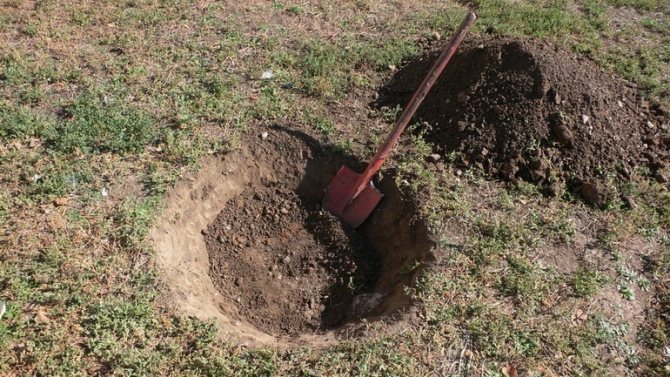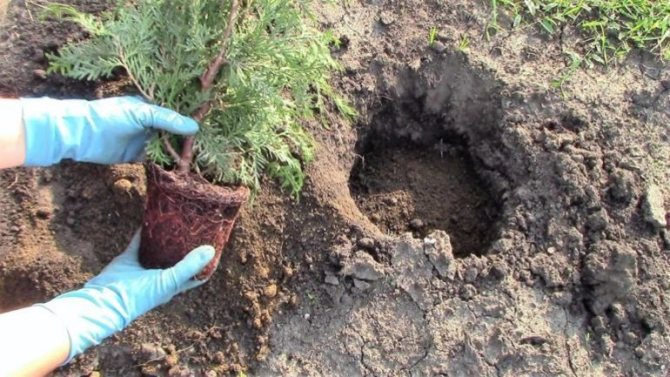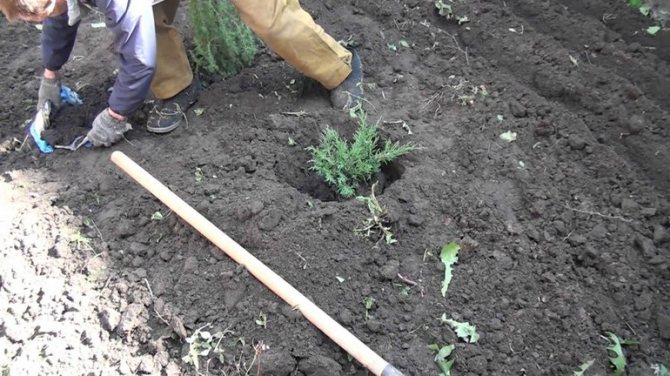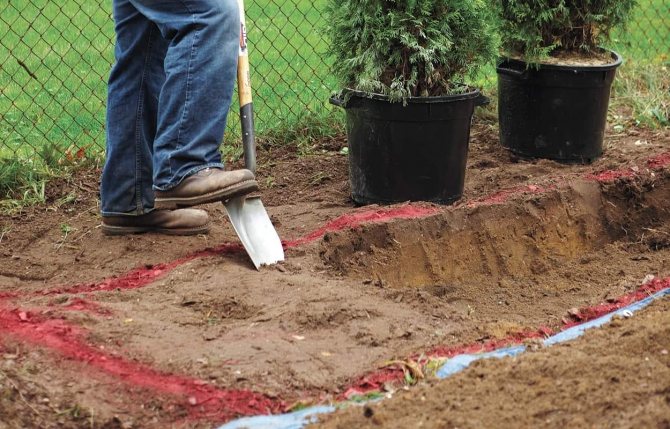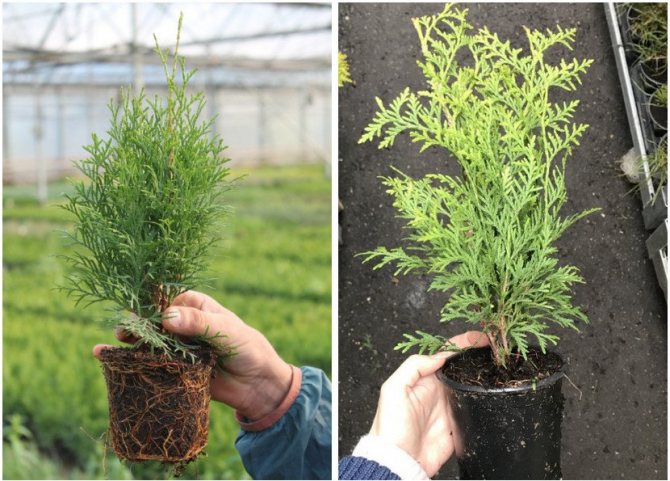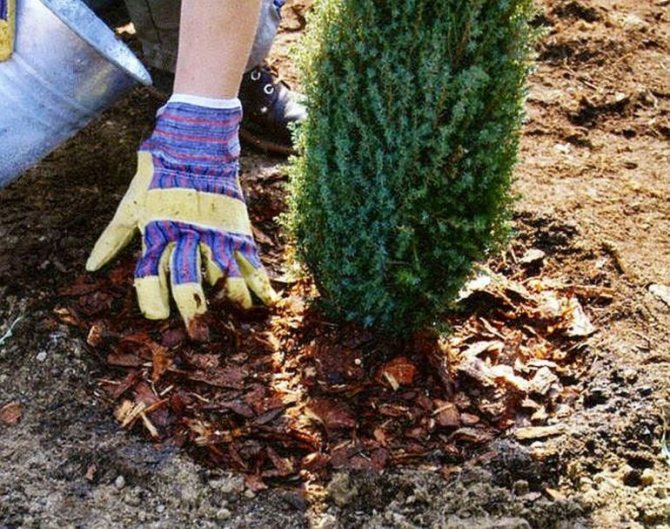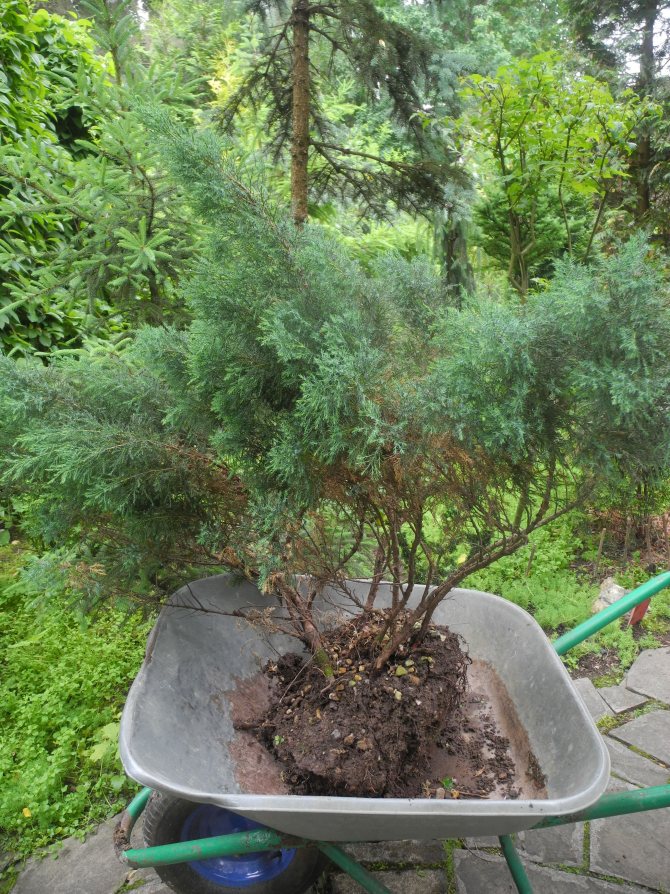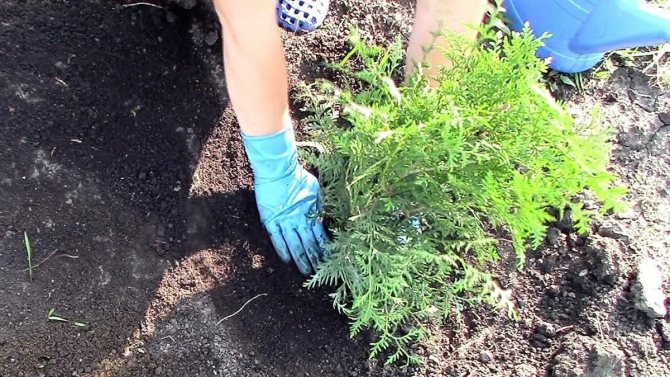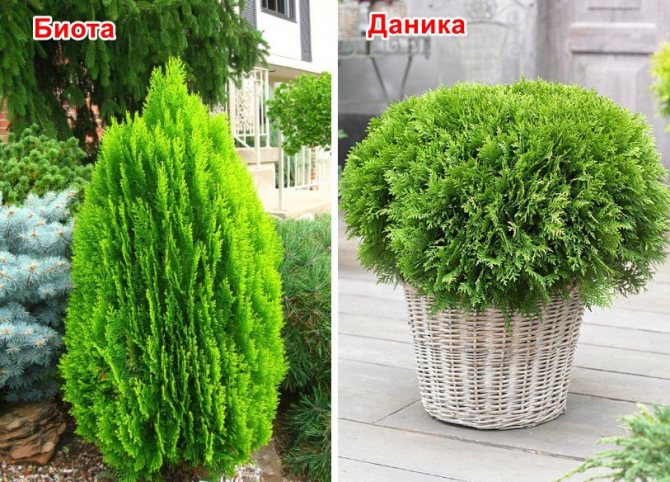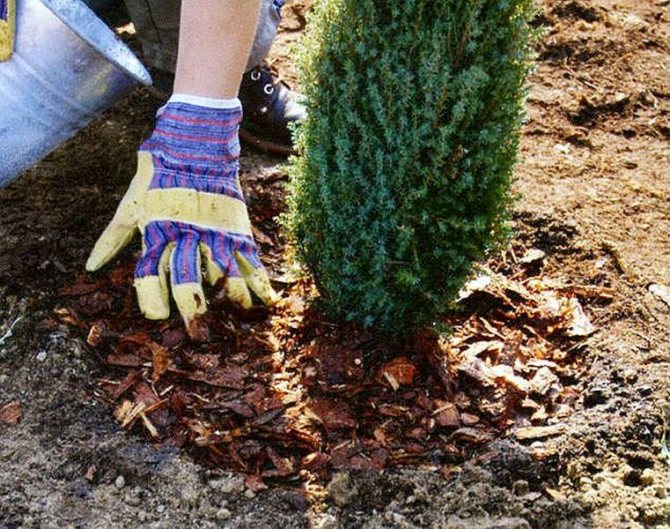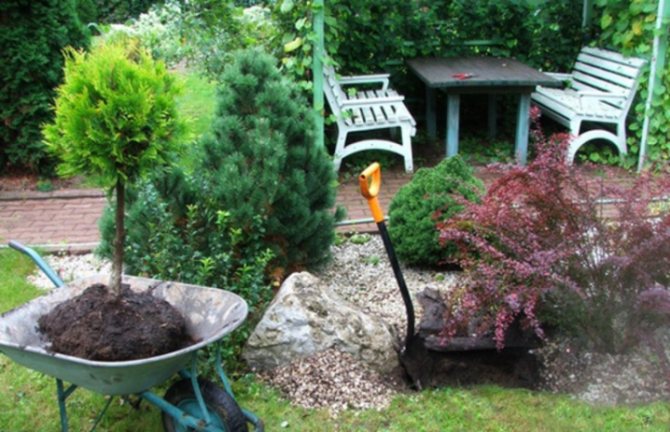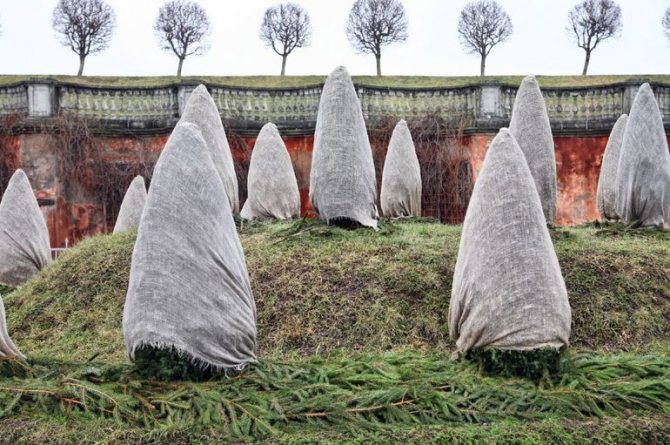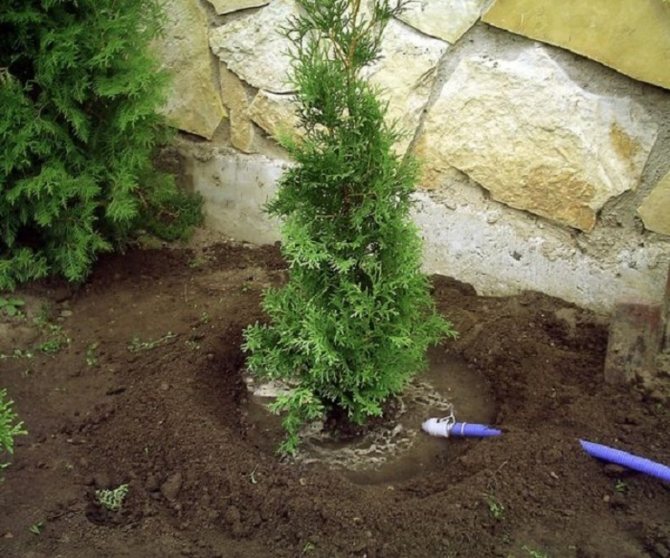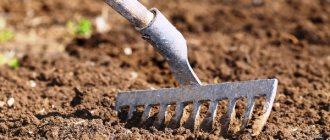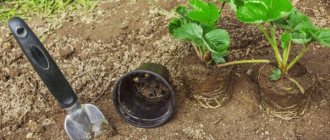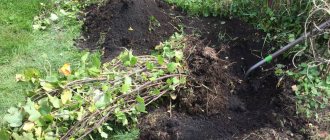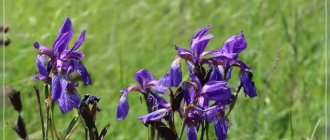Thuja is a beautiful evergreen plant that belongs to the cypress family. Thuja can be both a shrub and a tree, reaching a height of up to 10 meters. The plant is perennial, therefore it is often used to design backyard territories, landscaping areas and in landscape design in general.
The plant is very easy to care for. Even a novice gardener should not have any difficulties. The shrub feels equally well both in urban conditions and outside the metropolis. Growing thuja is permissible in any soil, regardless of its composition. The only thing that must be taken into account is timely pruning, crown formation and transplantation.
What is the correct time to transplant thuja? What is the best way to make the plant feel good in a new place? The transplant is carried out either in the spring or in the fall, depending on the purpose, but not in the summer. Thuja usually tolerates a transplant well, but in the first days it requires especially careful care, and you also need to know how to feed and how to reanimate the plant as a last resort.
Thuja features
Thuja is a shrub or tree that is resistant to drought and frost, unpretentious to care for. Growing a plant is permissible on any soil and terrain, but still you should not plant a tree in an open windy area.
Plant varieties are presented:
- Low-growing varieties.
- Tall varieties.
The main difference lies precisely in the height of the plant. The rest of the characteristics have no fundamental differences. Both plant species are similar to each other and to other members of the cypress family. They have a narrow, elongated crown, scaly leaves, located on the branches in pairs, small in size, oval cones at the ends of the shoots.
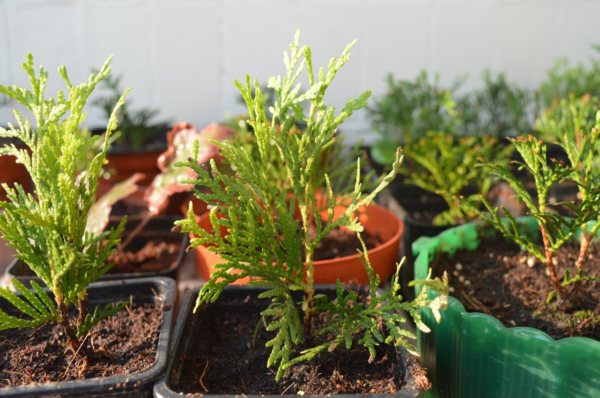
Coniferous feeding
When thuja is planted in autumn or spring, top dressing is applied. Next time it will need to be done in a year or two. If mineral mixtures or organics were laid during planting in the fall, then in the spring only general care measures are carried out without feeding.
Video: Features of planting thuja in spring, summer and autumn
From the third year after planting on the site, fertilizing is carried out twice: in autumn and spring. It is better to use easily soluble substances and add them with water. Thus, a good growth can be ensured, since thujas respond well to watering and quickly stretch in height. It is preferable to use organic matter with a low nitrogen content in spring - compost or humus, phosphorus supplements will be useful in summer, potassium is needed in autumn.
Plant transplant timing
The time frame when it is permissible to transplant thuja is a must. The optimal time is early spring or the first half of autumn. Spring terms - March-April, autumn - September-October.
Still, preference should be given to a spring transplant, since in the fall there is always some probability that the plant will not have time to take root before the first frost and will die after the onset of cold weather.
You may be interested in: Preparing the garden for winter - a set of activities
You can transplant both a young one (for example, from a pot to a large pot or into an open ground), and a large one, but the procedure has a number of some differences.When transplanting a young bush, you need to bayonet the soil around it with a shovel, and then the seedling is dug up and, together with a lump of soil, is transplanted to a new place. The main difference between transplanting an adult plant is that you need to bayonet the soil not at the time of the procedure, but 8-10 months before.
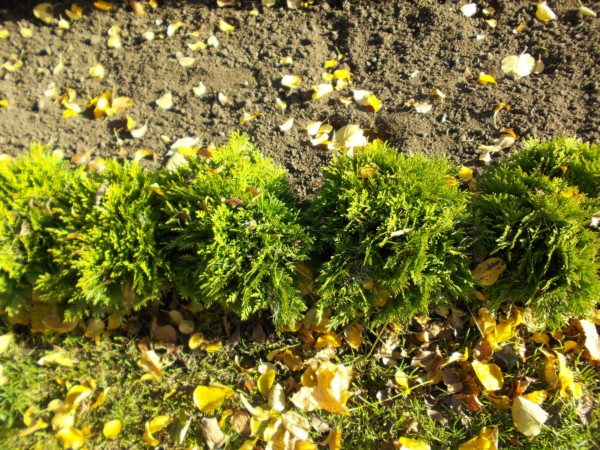

Advice
Summing up, you can give the following tips that will come in handy when carrying out a thuja transplant:
- During watering, which are carried out after planting in a new place, you can add root roots to the water used. or other types of stimulants, which will allow the bush to quickly harden and adapt to new conditions. It is necessary to determine the dosage strictly in accordance with the instructions attached to the drug.
- It is best to avoid hot sunny days for transplanting., thuja tolerates this procedure much better in cloudy and rainy weather.
- After transplanting, you can carry out not only watering, but also spraying from a spray bottle. This procedure is best done in the morning, and special anti-stress agents can be added to the water, which will speed up the adaptation process in a new place.
Thuja is a beautiful evergreen plant that belongs to the cypress family. Thuja can be both a shrub and a tree, reaching a height of up to 10 meters. The plant is perennial, so it is often used to decorate home gardens, landscaping areas and in landscape design in general.
The plant is very easy to care for. Even a novice gardener should not have any difficulties. The shrub feels equally well both in urban conditions and outside the metropolis. Growing thuja is permissible in any soil, regardless of its composition. The only thing that must be taken into account is timely pruning, crown formation and transplantation.
What is the correct time to transplant thuja? What is the best way to make the plant feel good in a new place? The transplant is done either in the spring or in the fall, depending on the purpose, but not in the summer. Thuja usually tolerates a transplant well, but in the first days it requires especially careful care, and you also need to know how to feed and how to reanimate the plant as a last resort.
Basic rules of procedure
The procedure for transplanting thuja, however, like any other plant, requires adherence to certain rules. Before proceeding with the transplant, you need to decide on the most suitable place. The tree loves the sun very much, but nevertheless, it is impossible to plant it in an open area, where direct sunlight will fall on the plant and it will be under the gusts of wind all the time. The sun will cause thuja to burn and become dehydrated. It is especially undesirable to choose the area where the sun shines on the bush at noon. Draft and constant exposure to gusts of wind leads to plant disease and does not allow creating a lush crown. It is not recommended to land on the north side of the site.
The plant is unpretentious to the soil, but it is still recommended to prepare a nutritious soil mixture in advance. For this, river sand, peat, humus, rotted coniferous flooring, phosphorus-potassium fertilizers are used (added at will, their purpose is to promote better plant survival in a new place).
Next, you must definitely prepare the pit. It is advisable to dig it out at least 15-20 days before planting. Exception - plant transplantation is carried out within the same area. Then the hole can be dug directly on the day of transplantation. The pit should be about one meter deep.
The first layer of the hole is stones or chipped bricks. This is drainage. Then mix the prepared soil mixture thoroughly until smooth, and then pour it onto the bottom of the prepared hole on top of the drainage layer.It is advisable to make sure that the roots of the thuja do not touch the fertilizers.
You may be interested in: Planting strawberries under plastic
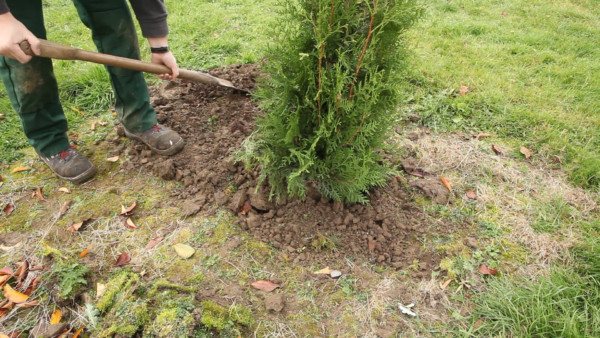

Site selection and preparation


Regardless of the variety and variety, thuja prefer the same growing conditions.
The site must meet several requirements:
- It is well lit by the sun - in the shade, the shrub will not develop normally, the needles will lose their natural decorative effect and will become less common.
- Do not be blown through by drafts and strong winds - such conditions negatively affect the health of the culture.
- The soil is preferable to breathe - this will allow the root system to receive a sufficient amount of oxygen.
As for the composition of the soil, there are no special requirements - thuja feels good in areas with clay and sandy loam soil, it normally tolerates the close occurrence of groundwater.
Nevertheless, it is advisable to give preference to sod substrates with the addition of sand, which are distinguished by a rich set of trace elements and nutrients.
It is recommended to prepare the soil in advance by mixing several components:
- peat and river sand;
- sod land and rotted coniferous flooring;
- wood ash and humus.
It is allowed to add phosphorus-potassium fertilizers in a reduced dosage - additional feeding will benefit the shrub and improve survival rate.
The digging of the planting pit is carried out on the day of transplantation; a drainage layer is necessarily placed on the bottom.
It is better to mix the soil for backfill with fine expanded clay - this will prevent moisture stagnation and subsequent decay of the root system.
Thuja transplant algorithm
In order to properly transplant thuja, it is convenient to use the following algorithm:
- Dig up the plant or carefully remove it from the pot. Moreover, you need to dig it together with a lump of soil, digging a trench with a diameter of 25-30 centimeters around the trunk.
- Examine the root system. Roots that are too long must be chopped off. Rotten or dry roots are also pruned.
- Next, a hole is dug, suitable for the size of the plant's root system. Drainage is laid at its bottom, then the soil mixture is poured.
- The rhizome should be placed in a pit, sprinkled with earth, tamping the soil.
- Water the plant well.
- It is advisable to mulch the soil, but you need to act so that the mulch does not touch the trunk.
- Water the thuja constantly until it takes root. Watering should be done at least twice a week.
This is a step-by-step technology for the correct transplantation of thuja.
Note! It is impossible to raise the root collar of the plant too much above the ground or, conversely, to add too much to it.
Keep in mind that planting should be done in the spring before the start of the growing season. During this period, the tree is too weak to transplant. The probability that it will take root is an order of magnitude lower. That is why it is recommended to replant the plant immediately after the last snow melts. Do not delay with this process.
If it is necessary to remove the plant outside the site, you need to act very carefully. After digging up a shrub or tree, excess soil is gently shaken off its roots. Next, burlap is put on the root system and in this form the plant is transferred to a new planting site. But it is not recommended to remove the bag from the roots immediately before planting.
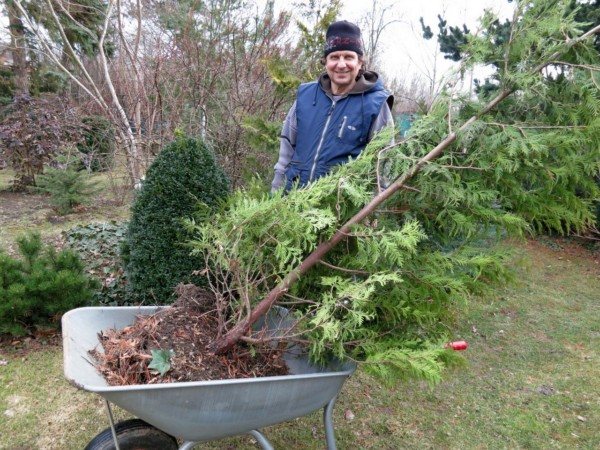

How to transplant?
Before replanting thuja, determine the place where it will grow. Regardless of the species - tall, spherical, squat, bushy, dwarf spherical - the planting technology is the same.
Remember that all thujas love well-lit areas, without drafts. It also grows in partial shade, but its crown will be less frequent, it loses its natural decorative effect.
If the plant is tall, choose a place that does not interfere with other trees. Spreading species will require a wide area.
In a hedge, the distance between thuja is 1-1.5 m
Dwarf spherical thuja look beautiful in an individual fit.
If it is planned to create a hedge from thuja, it is planted at a distance of 1–1.5 m from each other; for an alley, the distance between plants should be 4–5 m.
Trees take root well on all types of soil. The main thing is that it must be breathable. In order for the planting to take place without fuss, we prepare the soil mixture and the necessary material in advance.
The soil for transplanting can be purchased at specialized stores or made on your own.
We take a mixture of sand, peat and turf in a ratio of 1: 2: 1. It is good to add humus, as well as coniferous litter, which can be taken in the forest or elsewhere. All are mixed proportionally.
Helpful care tips
There are no special rules for caring for thuja due to the unpretentiousness of the plant. But it is still recommended to adhere to certain recommendations. Transplant thuja in the spring (you can also in the fall), but not in May. In particular, special attention is paid to watering. After planting, water the plant twice a week before rooting and then once a week. In hot and dry weather, you should double the number of waterings.
Advice! Two to three days after watering, the soil should be weeded. It is not necessary to do this too deeply, since the root system of the thuja has a superficial occurrence.
Sprinkling is recommended from time to time. An ordinary hose from which the tree is watered will help with this. Sprinkling is the ability to saturate the plant with moisture, wash off dirt and dust. This procedure helps prevent the appearance of fungal diseases.
How to plant thuja in open ground in autumn: step by step instructions
To understand how to properly plant thuja in open ground in the fall, the following step-by-step planting instructions, as well as a description of all the preparatory processes, will help.
How to choose a good thuja seedling for autumn planting
Advice! It is best to choose a thuja seedling in nurseries, garden centers or specialty stores. At the same time, they must have a good reputation, positive reviews from real buyers.
Firstly, they usually sell quality goods there. Secondly, if you have any questions regarding the planting material (variety, age, planting characteristics and cultivation techniques), you can ask the seller.
Today on sale you can find 2 types of seedlings:
- With a closed root system (ZKS). In this case, the seedling is in the ground, and the earthen lump, in turn, is in a container (pot or some other container), therefore it is often called "container type". It is better to buy and plant just such a seedling: firstly, it is easier to plant, and secondly, the chances of successful survival are much higher, and thirdly, it can be planted in spring, summer, and autumn. However, it also costs more.
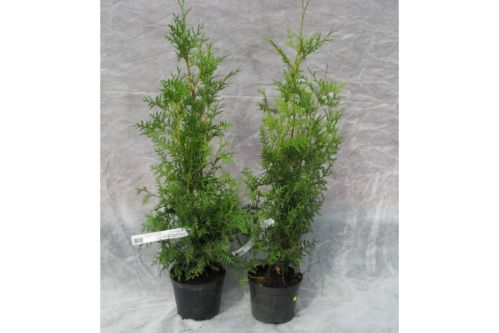

Important! You can remove the earthen ball with a seedling from the container only immediately before planting: you cannot leave the earthen ball in the open air for more than 10 minutes. Otherwise, the roots will immediately begin to dry out, and this will negatively affect the condition, health and vitality of the seedling.
- With an open root system (OCS). The name speaks for itself: the roots of the planting material are open, they are sold without an earthen coma (for example, in a package). It is cheaper than the first option, but it is more troublesome when planting, and you also need to take care of its storage if you bought it ahead of the planned landing.
Garden centers and nurseries mainly sell seedlings with a closed root system (in a container). It is rare to find a specimen with an OKS.
Before you go shopping, you should know the rules that will help you choose high-quality thuja fathoms for autumn planting:
- First of all, it is necessary to assess the general condition of the seedling: it must be healthy, have no signs of damage to the bark, shoots, needles, diseases, pests.
- Be sure to check with the seller the age of the seedling, it is best to plant planting material that is 3-4 years old (it will take root better and faster).
- It is recommended to choose a planting material that has a symmetrical shape.
- A good adult should have a lush crown.
- The seedling must have a healthy, developed root system:
- In a seedling with an open root system (ACS), the roots should be elastic, without damage, not dry, there should be no signs of rotting, mold (even just a moldy smell should alert you!).
- To check the root system of a seedling with a closed root system (CCS), you should inspect the bottom of the container: the roots should not stick out much from the drainage holes (this indicates that the seedling has been in this pot for a very long time). Also, if possible, carefully remove the earthen lump of the seedling from the container. The roots should have a white-pink color, but the brown roots should alert you.
- The needles of a thuja seedling should be healthy, have a normal green color (except for varieties with yellow and golden needles). You should not buy planting material with brown needles, because, most likely, such a specimen was poorly looked after and suffers from a lack of nutrients.
- The needles should not crumble.
- The site is open, well lit by the sun. You can grow the crop in partial shade and shade, but under such conditions the plant will thin out and gradually become less lush.
There is a simple trick to check the condition of the thuja seedling. To do this, you need to gently squeeze the needles with your hand for a couple of seconds, and then release. If the needles immediately straighten up and return to their previous state, then everything is fine with it.
How to choose a suitable place and soil for thuja
Tui is an unpretentious ornamental shrub, however, in order for it to show itself in all its glory during the growing process, it is very important to plant it in the most suitable and comfortable place in the garden.
Criteria for an ideal place for growing and planting thuja in the fall:
Advice! However, in regions with hot and dry summers (for example, Volgograd, Astrakhan, Rostov regions), cultivation in areas with little shade is allowed.
- If you want to plant a plant along a fence or some kind of building, then a gap of 1 or 1.5 meters should be maintained between the shrub and the fence or any building, building.
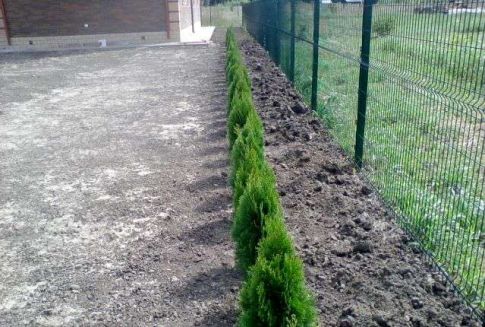

- The place should not be located next to trees, because in this case, the latter will take food and moisture, leaving the forest “overboard”. The optimal distance between thuja and any tree is at least 3 meters.
- The landing site must be protected from wind and drafts (mainly from the north side).
- Groundwater should not be too high (no higher than one meter). Avoid swampy, waterlogged areas, lowlands or places where moisture accumulates, because the shrub cannot tolerate waterlogging, it can cause root rot and death.
By the way! When choosing a place for planting a thuja seedling in the fall, it is important to consider a favorable and unfavorable neighborhood.
Concerning good neighbors, then the shrub looks very beautiful next to juniper, mock orange, astilba, hydrangea, hosta.

